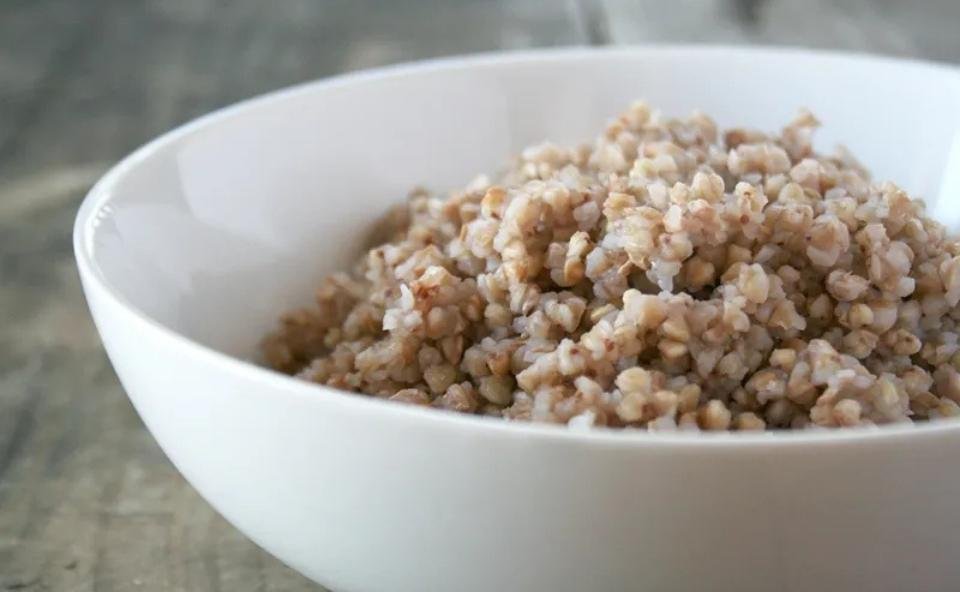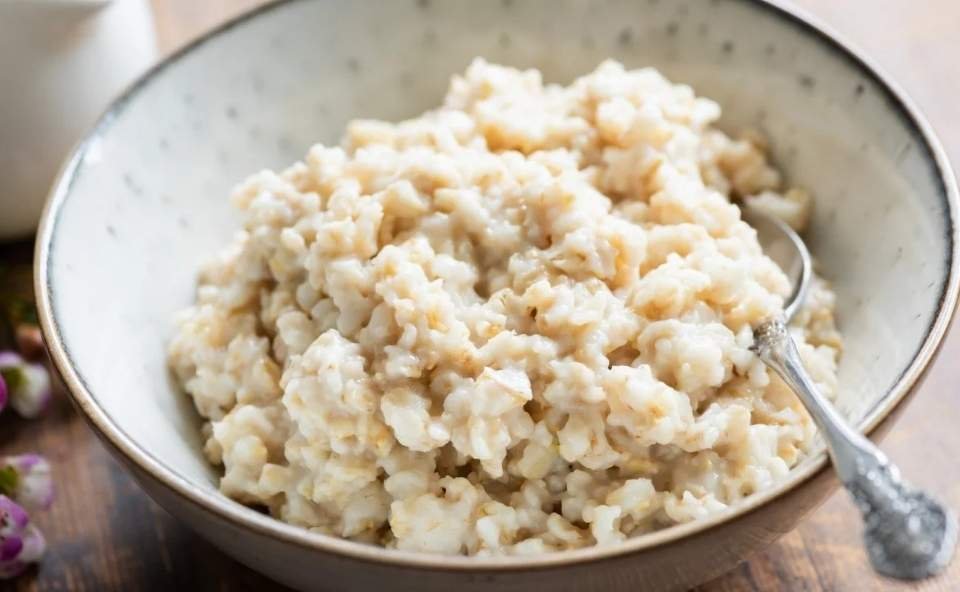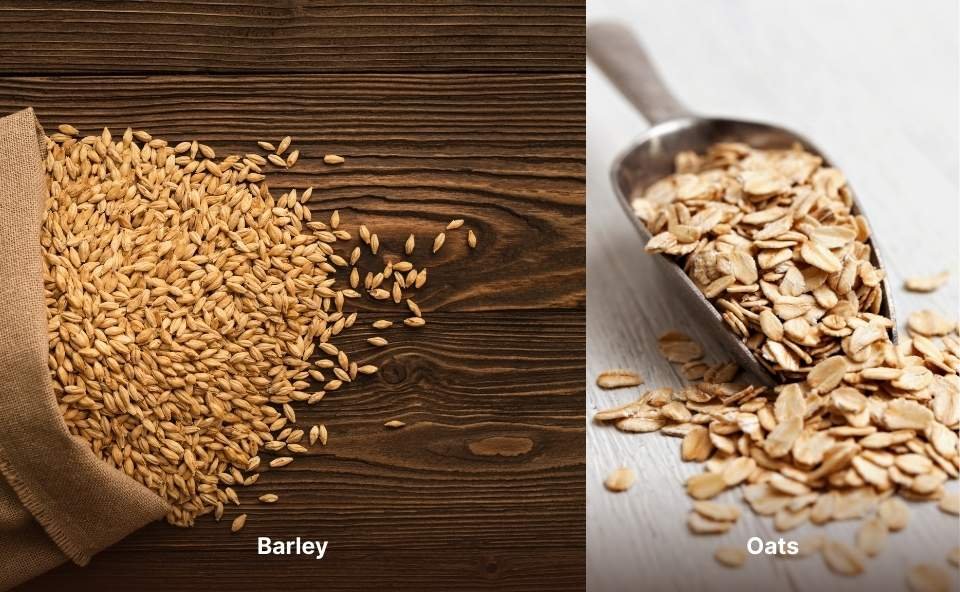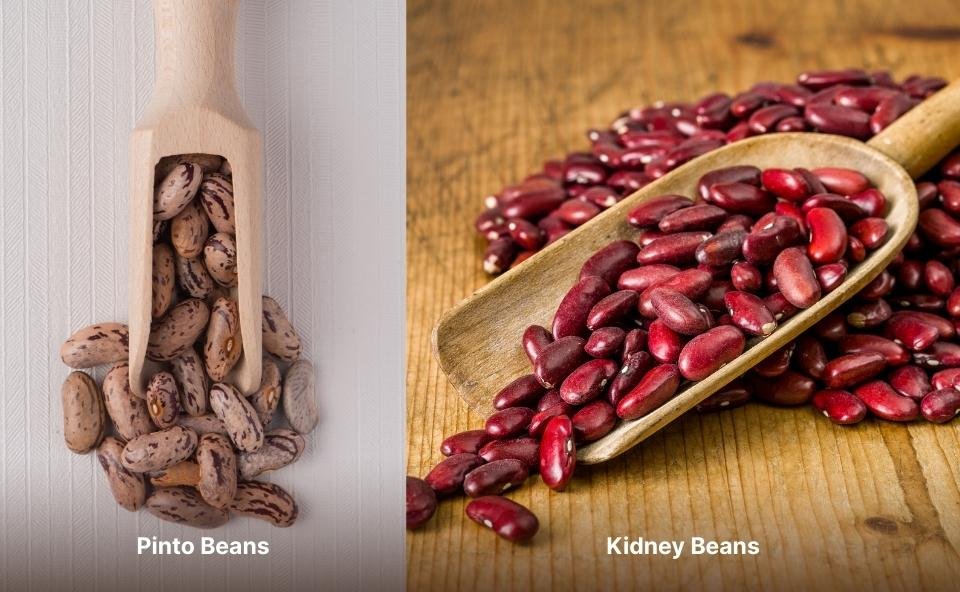Every morning, I look forward to a healthy breakfast that gives me the energy to start my day. For years, my first dish was always oatmeal, its creamy texture and mild taste felt comforting, and it was an excellent way to enjoy a nutritious meal. But then, I discovered buckwheat, a pseudocereal with distinct qualities and a unique flavor. Though it carries the name of a grain, it isn’t one, yet it’s just as filling and satisfying. Now, I love switching between both, depending on my mood and what I have on my breakfast table.
I have always been eager to try new foods, and exploring the attributes of these two grains was exciting. Oats are a classic, often found in boxed cereals at the grocery store shelves, while buckwheat brings an ancient feel to my meals. If you’re familiar with oatmeal but haven’t tried buckwheat, I highly recommend incorporating it into your diet.
There are so many culinary uses, and with a few tips to prepare it right, you might find your favorite ways to use both. Whether it’s a warm bowl of oats or a hearty plate of buckwheat, these foods are a perfect way to kickstart the day on a healthy note.
Before talking about their differences, here’s a simple overview of each grain from my experience.
Buckwheat
I first discovered buckwheat while searching for a gluten-free grain, and it instantly won me over. Though it sounds like wheat, it’s a seed, not a grain, and is classified as a pseudocereal.
Buckwheat has been grown for over 6,000 years. It is packed with nutrients and adds a rich, nutty flavour to meals. I love using the groats in warm Asian bowls or tossing them into fresh salads. When ground into buckwheat flour, it creates delicious pancakes and bakes with a hearty touch.
I now consider it a pantry must-have. If you’re curious about its many uses, this Buckwheat Complete Guide is a great place to begin your journey.
Oats
For me, oats have always been more than just a whole grain. They’re a comfort food that fits into any routine. Whether I am making a warm bowl of oatmeal on a chilly morning or grabbing a homemade granola bar on the go, oats are my go-to ingredient. Their mild flavor and creamy texture make them incredibly versatile, whether mixed with dairy milk, plant-based milk, or water. Once cooked, they transform into a porridge-like dish that’s an excellent source of fiber, protein, vitamins, and minerals. This powerhouse food is a staple in my diet, helping me stay full and energized throughout the day.
What I love most about oats is that they come in many different forms, each with a unique texture.
- Oat Groats; I love how oat groats maintain their whole, unprocessed grain texture, making them feel hearty and filling. They’re also thicker and chewier than any other type, giving every bite a satisfying, wholesome feel.
- Steel-Cut Oats; These oats are made by slicing oat groats into small pieces with steel blades, giving them a chewier texture and a hearty bite. They cook faster than whole grains but still retain that rich, nutty flavor I enjoy in a warm breakfast bowl.
- Old-Fashioned Oats; Whenever I need a quick but filling meal, I reach for old-fashioned rolled oats, which are steamed and flattened, making them significantly quicker to prepare. Also known as Aka Rolled Oats, they cook faster and turn creamier, making them perfect for a smooth, comforting bowl of oatmeal.
- Quick Oats; On busy mornings, quick oats are a lifesaver since they’re broken into smaller pieces, allowing for faster cooking. These rolled oats are extra creamy, and I love how easily they mix into my smoothies or baked goods.
- Oat Flour; When I bake, I always keep oat flour on hand because it’s finely ground from oat groats into a soft powder, making it a popular choice for healthier recipes. It gives my pancakes and muffins a light, wholesome texture without sacrificing flavor.
Want to see how oats compare to other supergrains? Check out our in-depth guides on Oats vs Barley and Oats vs Quinoa to discover which one fits your lifestyle and meals best! 🥣🌾
Oats always find a way to fit into my kitchen, whether in baked goods, breakfast bowls, or hearty dishes. Now it’s time to take a closer look at both of their appearances.
How They Look and Feel
I’ve always found buckwheat to be one of the most unique grains. Its triangle-shaped seeds remind me of tiny hearts, which makes it feel extra lovely when cooking with it. The golden brown color gives it a beautiful, natural look, and size-wise, it sits right between quinoa and barley. On the other hand, steel-cut oats are the closest in shape to buckwheat, but they have a much lighter color and a more uniform cut, making them easier to recognize.
When it comes to texture, I love how buckwheat stays soft yet still holds its form as individual grains, giving every bite a slightly chewy consistency. In contrast, rolled oats and quick oats turn mushy, which is great if you prefer a creamy dish. I personally enjoy the way steel-cut oats and oat groats behave more like buckwheat groats, staying firm and hearty even after cooking. It all comes down to what kind of texture you enjoy in your bowl!
Let’s Explore Their Taste
Growing up, I always loved experimenting with different grains, and both buckwheat and oatmeal became staples in my kitchen.
Buckwheat
If you enjoy bold flavors, buckwheat is an exciting choice. It has a nutty, earthy, and slightly bitter flavor that feels rich and intense. The first time I tried buckwheat porridge with fresh fruit and nuts, I was surprised by how well its robust taste paired with sweet toppings. Over time, I found it worked beautifully in baking, especially for gluten-free pancakes, noodles, and baked goods. While its taste might be an acquired one, it’s truly loved by those who enjoy hearty and gluten-free meals.

Oatmeal
On the other hand, oatmeal has always been my go-to for a comforting and great-tasting dish. Its mild, subtle flavor is much softer and blends effortlessly with different ingredients. It easily absorbs liquid, which makes it ideal for breakfast cereals, where it can be mixed or combined with sweet and savory add-ins. Whether it’s warm oatmeal with cinnamon and honey or a savory version with nuts and cheese, its versatile nature makes it an easy favorite.

While buckwheat’s whole groats bring a distinctive depth to meals, oatmeal’s gentle flavor makes it a reliable choice for any mood or craving.
Nutritional Comparison of Buckwheat and Oats
When it comes to choosing between oats and buckwheat, I’ve always found it tough because both have incredible health benefits.
| Nutritional Facts (Oats) Serving 1 | % Daily Value | Nutritional Facts (Buckwheat) Serving 1 | % Daily Value |
|---|---|---|---|
| Calories 150 | Calories 142 | ||
| Total Fat 2.6g | 3% | Total Fat 1.1g | 1% |
| Saturated Fat 0.4g | 2% | Saturated Fat 0.2g | 1% |
| Cholesterol 0mg | 0% | Cholesterol 0mg | 0% |
| Sodium 2mg | 0% | Sodium 5mg | 0% |
| Total Carbohydrate 27g | 10% | Total Carbohydrate 30.7g | 11% |
| Dietary Fiber 4g | 14% | Dietary Fiber 4.2g | 15% |
| Total Sugar 0.4g | Total Sugar 0g | ||
| Protein 5.3g | Protein 4.8g | ||
| Calcium 21mg | 2% | Calcium 7mg | 1% |
| Iron 2mg | 9% | Iron 1mg | 6% |
| Potassium 145mg | 3% | Potassium 131mg | 3% |
| Oats | Buckwheat |
- Oatmeal; As someone who enjoys a balanced diet, I appreciate how Old Fashioned Rolled Oats provide a great source of dietary fiber, which supports heart health and helps reduce cholesterol. A serving size of 1/2 cup gives you 190 calories, 4g total fat, 33g total carbohydrates, 5g dietary fiber, and 6g protein. Oats are also rich in B vitamins, iron (2mg), folate, magnesium, phosphorus, manganese, and potassium (172mg), all of which are essential for digestion and gut health. Since they are naturally gluten-free, they’re perfect for people with gluten sensitivities.
Personally, I love having a warm bowl of oatmeal in the morning, but I make sure not to add too many sweeteners like brown sugar, maple syrup, honey, or dried fruit, as that can make it unhealthy.
- Buckwheat; They have always fascinated me because they are a fantastic plant-based protein source. If you’re looking for more protein, buckwheat is a great choice, with 12g per 1/2 cup serving. The same serving size also contains 320 calories, 2g total fat, 4g dietary fiber, and a generous amount of essential vitamins and minerals like iron (2mg), calcium (8mg), magnesium, phosphorus, and potassium (392mg). Plus, it’s low-fat and completely free from sugar, making it a healthier alternative if you want something natural.
Unlike oats, buckwheat has a naturally nutty flavor, and I find it works well in both savory and sweet dishes.
From my experience, both grains are excellent choices, but it’s all about how you prepare them. Many breakfast recipes add too many mix-ins, turning a healthy meal into something far from nutritious. Whether you prefer oats or buckwheat, keeping them simple allows you to enjoy their true nutritional benefits while maintaining a whole-grain, fiber-rich diet.
My Go-To Cooking and Preparation Guide
I’ve always enjoyed experimenting with different grains for breakfast, and over time, I’ve found that both buckwheat and oats have their own unique appeal. Whether I’m craving a creamy bowl of oatmeal or the slightly chewy texture of buckwheat groats, knowing the right cooking methods and cook times has made my mornings a lot easier.
Oats;
When I prepare oats, I pick the method based on how much time I have.
- On busy mornings, I throw rolled oats into the microwave for 5 minutes, and they’re ready in no time.
- But when I want something heartier, I cook steel-cut oats on the stovetop for about 15 minutes or let my Instant Pot handle them in 20 minutes.
- If I’m feeling patient, I go for oat groats, which take up to an hour on the stove but have the best chewy texture.
No matter which type I use, I always make my oatmeal customizable with fresh fruit, a sprinkle of brown sugar, or a handful of berries to match my taste preferences.
Buckwheat;
For days when I want something a little different, I turn to buckwheat.
- The process is simple, I use a 1:2 ratio of buckwheat groats to water, bring the mixture to a boil, then let it simmer for about 10-15 minutes while I occasionally stir. Once tender, I drain any extra liquid, and it’s ready to eat.
I love how filling and nutty it tastes, making it a great alternative to oats when I want to switch things up.
Both grains have become staples in my kitchen, and choosing between them just depends on my mood and how much time I have!
Their Cost and Smart Shopping
Whenever I shop for grains online, I always compare prices to get the best deal. The cost of buckwheat and oatmeal can be surprisingly different.
On Amazon, a pound of buckwheat is around $9.49, which feels pretty expensive compared to an 18 oz container of old-fashioned oatmeal for just $2.49. That kind of difference adds up over time, especially if you eat these grains regularly like I do. Since I enjoy both, I always keep an eye out for bulk deals to save money without sacrificing variety in my meals.
I’ve found that buying in bulk online is often the best way to go. At Costco, I once grabbed a 10-pound bag of Kirkland Signature whole-grain rolled oats for just $9.99, which works out to only $1.00 per pound—a total steal. Meanwhile, buckwheat never seems to drop much in price, even when bought in larger quantities.
Whether I’m browsing Amazon or checking other online retailers, I always compare prices and read reviews before making a purchase. It’s a small habit that has helped me stock my pantry without overspending.
Diets and Weight Loss
Not Keto-Friendly but Great for Plant-Based Diets
I’ve tried both buckwheat and oatmeal and while they are great for many diets, they don’t fit into a keto lifestyle because of their high carbohydrate content.
However, if you follow a plant-based diet, both are excellent options. I enjoy oatmeal with lactose-free milk, which is a fantastic alternative to dairy for lactose-intolerant people. It gives the same creamy texture without any discomfort, making breakfast both healthy and enjoyable.
Buckwheat for Sustained Energy, Oatmeal for Quick Fuel
As someone who works out regularly, I’ve noticed how different these grains affect energy levels. Buckwheat has a low glycemic index, so it doesn’t cause a sudden spike in blood sugar or insulin levels and is digested slowly. This makes it great for bodybuilding, especially when paired with protein sources like chicken, beef, or fish instead of rice.
On the other hand, oatmeal has a higher glycemic index, giving a quick energy boost, which I find useful before an intense workout.
Buckwheat for Weight Loss and Lasting Fullness
If you’re looking to lose weight, buckwheat is an ideal choice. It’s rich in fibers, which keeps you fuller for longer durations and helps control cravings.
I’ve replaced rice with buckwheat in many of my meals, and it makes a noticeable difference in appetite and energy. It’s one of the best ingredients for cooking healthy meals without feeling deprived.
Oatmeal for a Strong Start to the Day
For breakfast, I always turn to oatmeal when I need steady energy. It’s perfect for kickstarting my day, especially when topped with fresh fruits and nuts. Compared to corn-based breakfast meals, oatmeal provides better nutrition and keeps me fueled for hours. It’s a comforting, nutritious choice that fits well into my routine.
Recipes
I love using both buckwheat and oats in my cooking, whether for a warm bowl of savory porridge or a hearty meal plan.
My go-to breakfast is a creamy congee, simmered in broth and water for the perfect liquid ratio. Topped with fried garlic, chicken, onions, chives, cilantro, soft-boiled eggs, pork belly, and chili paste, it’s a flavorful dish I enjoy for lunch or dinner too.
For variety, I turn to buckwheat in salads, soups, and baked goods made with buckwheat flour.
I also love making Soba Noodles, a delicious Japanese noodle dish I discovered on the internet. Whether searching the web for new ideas or experimenting with these grains, I always find creative ways to enjoy them!
Frequently Asked Questions
What is the Glycemic Index Score of Buckwheat vs Oats?
From my experience with both oatmeal and buckwheat, I’ve found them to be excellent choices for balanced meals. The Glycemic Index (GI) Score of oatmeal usually falls between 42 and 55, depending on the variety and cooking method, while buckwheat ranges from 45 to 55, depending on the preparation type. I personally love how both grains support blood sugar control with their rich fiber content, helping with digestion and preventing those dreaded rapid spikes in sugar levels. Of course, everyone’s body reacts differently, so I always recommend considering dietary patterns and seeking healthcare professional advice for the best approach.
What is the Gluten Content of Buckwheat vs Oats?
I’ve always been mindful of gluten-free options, especially when baking for friends with celiac disease. Buckwheat has been a lifesaver—it’s a seed, not a grain, and makes a great substitution in recipes that usually call for wheat flour. Buckwheat doesn’t contain gluten, so it’s perfect for anyone avoiding gluten for health reasons.
Oatmeal, on the other hand, is naturally free of gluten, but since it’s often processed in shared facilities with other grains, there’s a high chance of cross-contamination. If you have a gluten intolerance, I always recommend going for certified gluten-free oats to be on the safe side.
Buckwheat Vs Oats, Which One Fits Your Diet Best?
I’ve always enjoyed experimenting with buckwheat and oats in my kitchen, and over time, I’ve realized that the right choice depends on personal preference and dietary restrictions. Both offer valuable nutrients and support a healthy, balanced diet, but they are quite different in taste, texture, and flavor.
I find oatmeal to be milder and more versatile, making it a preferred option for quick breakfasts, especially since it cooks faster. However, if I want something hearty, buckwheat is my go-to because it’s naturally gluten-free and isn’t at risk of cross-contamination in processed facilities that handle wheat.
From a budget standpoint, oats can be cheaper to purchase and have a lower cost over time.
Whether I need more fiber, less fat, or just a new way to meet my nutritional needs, both grains have their place in my diet, providing endless versatility for creative meals.
Can You Swap Buckwheat and Oats in Recipes?
I’ve tried swapping buckwheat and oats, and while it works, their texture, flavor, and cooking times make a difference. Some recipes turn out great, while others need minor tweaks. Before making a big dish, I always experiment with a small batch first to match my taste and preferences.

Hi, I’m the voice behind The Bean Bite — someone who’s genuinely obsessed with beans! What started as a simple love for homemade lentil stew turned into a journey of discovering bean varieties, cooking tips, and their amazing health benefits. This site is my way of sharing that joy with you — one bean at a time.



